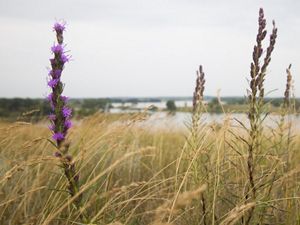New Report Shows Power of Nature to Tackle Climate Change in Minnesota
Natural areas and working lands can slash emissions.
Media Contacts
-
Chris Anderson
Marketing Director
Email: canderson@tnc.org
Forests, farms, prairies and wetlands that naturally remove carbon from the air can significantly reduce emissions in Minnesota and help residents and nature adapt to expected warmer and wetter weather.
Natural areas and working lands can provide more than half the reductions needed to meet the state’s 2025 goal for greenhouse gas emissions while providing other benefits including clean water, flood reduction, improved habitat for fish and wildlife and increased opportunities for outdoor recreation.
Quote: Ann Mulholland
We need to take action on climate change and nature provides the simplest solution of all.
That’s the opportunity presented in a new report, Nature and Climate: Solutions for Minnesota, released today by The Nature Conservancy and available online at nature.org/mnclimate.
“We need to protect our lands and our waters for our immediate benefit and for future generations,” said Ann Mulholland, the Conservancy’s director in Minnesota, North Dakota and South Dakota. “We need to take action on climate change and nature provides the simplest solution of all.”
Natural climate solutions are conservation, restoration and improved land management practices that increase carbon storage or avoid greenhouse gas emissions. The Conservancy’s report shows that natural climate solutions offer the greatest potential for storing more carbon in Minnesota. Fully implementing them across the state would mitigate up to 26 million metric tonnes of carbon dioxide per year—equivalent to taking seven coal power plants offline.
That’s because trees remove carbon from the air. Widespread adoption of cover crops and reduced tillage by our farmers would enrich the soil and store more carbon in the ground. Wetlands and grasslands provide the same natural benefits.
Quote: Sachiko Graber
State leadership through investment in natural climate solutions, as well as goal-setting and agency action, will be essential to addressing climate change and ensuring a Minnesota in which people and nature can thrive.
Sachiko Graber, climate policy lead for the Conservancy in Minnesota, noted that while land use in Minnesota is the state’s third-largest source of emissions, relatively little action has been taken to systematically lower them.
“Natural climate solutions are one of the best and most cost-effective answers to our climate challenge. We cannot reach our emission reductions targets in Minnesota without them. State leadership through investment in natural climate solutions, as well as goal-setting and agency action, will be essential to addressing climate change and ensuring a Minnesota—as well as a world—in which people and nature can continue to thrive,” Graber said.
The need to ensure that Minnesota’s lands and waters remain healthy and resilient was also highlighted in the report. Referred to as nature-based adaptation, such strategies ensure natural areas, working lands and our environment continue to benefit people and nature in a changing climate. Examples include keeping grasslands diverse and healthy for grazing and wildlife and planting trees in cities to improve people’s health by improving air quality and reducing excessive heat.
Get the Report
The Nature Conservancy is a global conservation organization dedicated to conserving the lands and waters on which all life depends. Guided by science, we create innovative, on-the-ground solutions to our world’s toughest challenges so that nature and people can thrive together. We are tackling climate change, conserving lands, waters and oceans at an unprecedented scale, providing food and water sustainably and helping make cities more sustainable. The Nature Conservancy is working to make a lasting difference around the world in 77 countries and territories (41 by direct conservation impact and 36 through partners) through a collaborative approach that engages local communities, governments, the private sector, and other partners. To learn more, visit nature.org or follow @nature_press on X.





